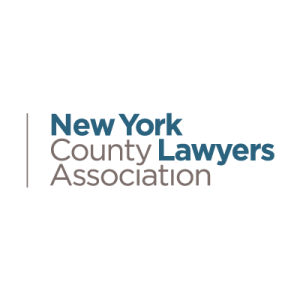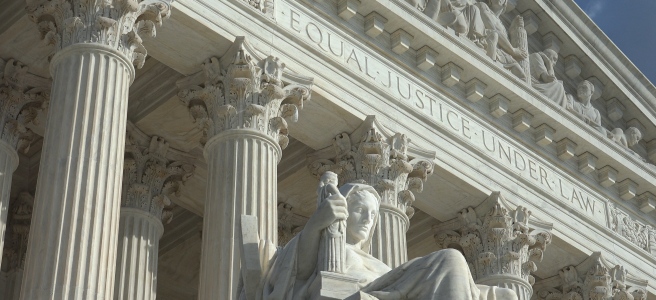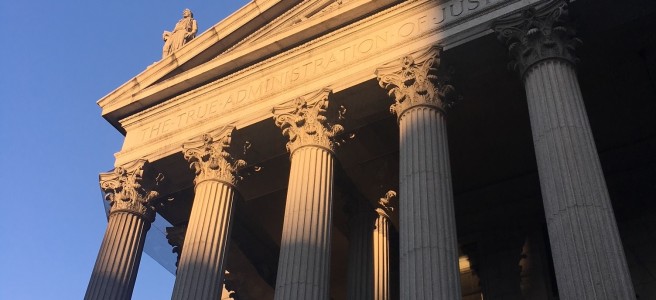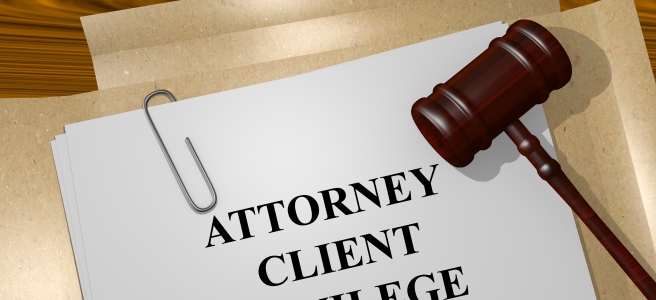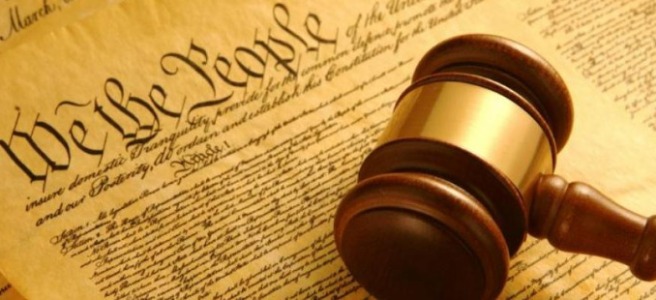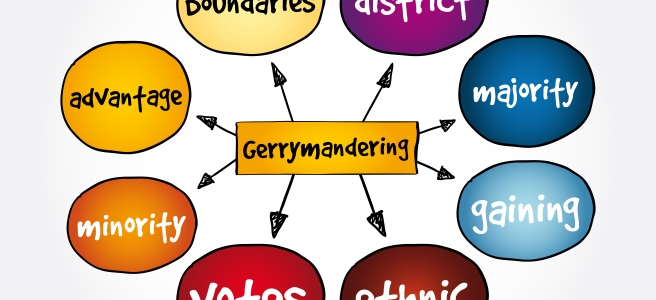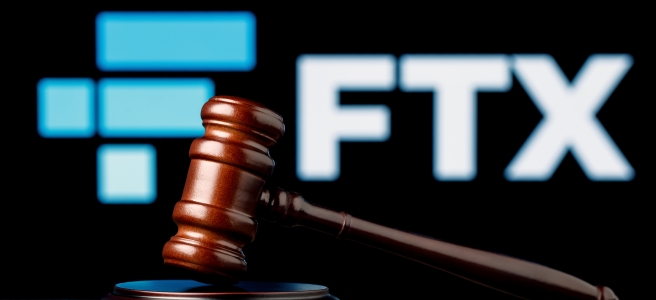Perhaps the most important case of this year’s Supreme Court term is scheduled to be argued on Wednesday December 7 (Pearl Harbor Day!). The case may be an attack on democracy, but it’s not a sneak attack. Everything is out there for the world to see. The case concerns partisan gerrymandering and what the judiciary can do about it. The dangerous part of the case is the so-called Independent State Legislature Theory, or to cognoscenti, the “ISLT”, which given our nation’s current political environment could be a serious threat to democratic norms. How did the case arise and what is at stake?
The case concerns North Carolina’s severe gerrymandering of its congressional redistricting after the last census. The evidence offered in the state courts below, which was never seriously disputed, showed that the Republican-drafted election map was a radical statistical outlier, favoring Republicans over Democrats compared to 99.9999% of all possible maps. That’s not a typo. The evidence also showed that even if Democrats received 50% of total votes for their congressional candidates, the map guaranteed they could not elect more than 4 out of 14 representatives.
Naturally litigation ensued. Because the Supreme Court decided in 2019 in the Rucho case that gerrymandering was a political question, the federal courts could not intervene, so the litigation was brought in the North Carolina state courts. (Parenthetically, it was in part because of Rucho that Chief Justice Roberts was able so successfully to keep the Supreme Court out of all the litigation that ensued in the wake of the 2020 presidential election, all of which ended up in the attempted coup on January 6, 2021, and Chief Justice Roberts’ ability to keep the Court out of that litigation while the country guided itself to a successful, if not uneventful, transition of power, was most definitely an achievement of his.)
In the first round of state court litigation, the North Carolina Supreme Court found there to be an unconstitutional gerrymander under the state’s constitution, and it ordered the state legislature to re-draw the map. The state legislature unsurprisingly was recalcitrant and adopted another gerrymandered map. On round two the state Supreme Court ordered a special master to re-draw the map. The state took an appeal to the Supreme Court of the United States, arguing that it was unconstitutional under the federal Constitution for the state Supreme Court to intervene in this fashion. The state’s theory is that under the federal Constitution’s Election Clause, only the state legislature could act and the state’s judiciary had no power to act.
The purported basis for this theory is that under the so-called Elections Clause the state legislature has the sole and unreviewable power to set election rules. Article I, Section 4 does provide that “the Times, Places and Manner of holding Elections for Senators and Representatives shall be prescribed in each State by the Legislature thereof.” But from a provision that allows state legislatures to pass statutes setting forth polling hours and the like, the petitioners want to make a giant leap that this language by itself means that ONLY the legislature can prescribe election rules, including gerrymandering to their heart’s delight and all manner of other pernicious election-related activity of which we’ve seen far too much in the recent past. Does this language really bar judicial review? Whatever happened to Marbury v. Madison and its many state equivalents? The power grab is staggering. Yet it is what the so-called Independent State Legislature Theory posits.
The modern incarnation of the theory has its roots in Bush v. Gore, which itself is a genealogy that should raise questions. In appointing the President…that is what the Court did, let’s be clear about that, and in my opinion it was the start of much of the public’s current loss of confidence in the Court…Chief Justice Rehnquist referred to the theory in arguing that the Florida state court’s order that the ballots be counted ran past the state law deadline for certifying the election results. He seemed to be saying that one reason to stop the counting was that continued counting was in violation of state law. But wasn’t that for the Florida Supreme Court to determine? And how do you make the leap from saying the timing of the count is taking too long to the argument that a state legislature can do whatever it wants free from any judicial review whatsoever? (Also, what happened to the Court’s own admonition that you should never ever cite Bush v. Gore again?)
The first and easiest way around this argument in the Moore v. Harper case is that North Carolina election law does provide for judicial review of election law determinations. Thus, the North Carolina legislature passed a statute governing the time, place and manner of elections that expressly allows for judicial review. Isn’t that part of the “Manner” of the conduct of elections that the state legislature authorized? Why shouldn’t that be the end of the story?
But the Supreme Court (of the United States, not North Carolina) didn’t grant certiorari to come to that simple and banal result. Rather, the ideologues in the conservative wing I believe intend to drive this case to a different and much more dangerous outcome. I believe that Chief Justice Roberts will try to avoid a broad ruling along the lines sought by the state, because he certainly understands the implications, but we know he has lost control of his Court. He’ll have to convince at least one of his conservative colleagues to go along with a narrow ruling.
Consider the potential consequences if Chief Justice Roberts is unsuccessful and the Supreme Court adopts an extreme version of the Independent State Legislature Theory, ruling that state legislatures can do whatever they want without judicial review. First, in the case of gerrymandering, it will be “Katy bar the door.” If the Supreme Court won’t allow federal courts to get involved, which is the thrust of Rucho, and there are no state court limits on legislative power, the most egregious acts of gerrymandering will become even more common.
In our very own state of New York, for example, the Court of Appeals recently turned away an almost equally gerrymandered map favoring the Democrats (also at the 99.9999% level of significance). They did so after the Democrats, in full control of the state legislature with a veto-proof super-majority, pushed through a state constitutional amendment to create a state commission to deal with extreme gerrymandering, which some other states have also done (for example, Ohio) to try to deal with this problem. The Democrats in Albany then arrogantly ignored their own action, pushed out an extreme gerrymandered map and basically gave the finger to the courts and themselves, over-confident in their ability to prevail. It didn’t help that one of their proposed districts was so non-contiguous that it occupied opposite shores on Long Island Sound. Chief Judge Janet DeFiore and her colleagues said no dice, and restored the commission’s map. The logic of their decision was that the state legislature couldn’t ignore the state constitutional amendment that they themselves had sponsored, so the commission’s map had to prevail. It would be hard for anyone to defend the propriety of the state legislature’s acts under the circumstances and the Court of Appeals’ decision in my opinion was a clear victory for the rule of law. The election proceeded on the basis of the map endorsed by the Court of Appeals and the Democrats lost four congressional seats to the Republicans that likely would have been kept if the state legislature had gotten its way. Those four seats alone were a major part of the swing from Democratic to Republican control of the House of Representatives. While those on the left interested only in political power have decried the result, all that the Court of Appeals really said was “you can’t pass a statute, or, worse, a constitutional amendment, and then utterly ignore it, and expect the judiciary not to have something to say about it.” And yet, if Moore v. Harper’s version of the Independent State Legislature Theory becomes the law the proceedings before the New York Court of Appeals arguably would have been unconstitutional under the federal Constitution. Assemblyman Michael Gianaris from Queens might be happy with that outcome given his bitter complaints about the Court of Appeals, but what is good for the goose is good for the gander and he would have to accept results such as that in North Carolina as a consequence. In the longer term, in my opinion we are better off with an active judiciary who can enforce the rule of law and police such blatant misbehavior.
But the consequences won’t be limited only to gerrymandering, bad as that alone may be. Right now in Arizona and elsewhere we have election boards refusing to certify results. What happens if a state legislature directs an election board or a secretary of state not to certify a result? What happens if a state legislature refuses to permit presidential electors to be designated consistent with the state popular vote and selects other electors instead? That was what was behind all the efforts to “stop the count” on January 6, 2021. Would judicial review of that determination be prohibited as well? We can’t say that won’t happen. It already has.
Indeed, that is one of the reasons I am skeptical about the proposed Electoral Count Act amendments currently working their way through Congress. The purpose of the amendments is to make the counting of electoral votes more mechanical in Congress, and supporters say that is designed to prevent objections like we had on January 6 in Congress while an attempted coup was materializing outside. That objective is worthy, but if a state legislature supplants the popular vote, and relies on the Independent State Legislature Theory to do that, I worry that the effect of the Electoral Count Act amendments will be to require Congress to count a rogue state legislature’s designated electors selected in such a fashion, without any form of judicial review available to stop it. The fact that Mitch McConnell supports the amendments only increases my concerns. He is a brilliant strategist, and may be foreseeing precisely such an outcome.
Any one of a variety of other pernicious acts by rogue state legislatures can be conjured up if the Independent State Legislature Theory is adopted. None of them promotes democracy.
The petitioner’s brief also shows the challenges involved in trying to utilize an “originalist” approach to constitutional interpretation. The petitioners claim that there was a subtle change in the wording of the Elections Clause during the 1787 constitutional convention which was substantive to the point of being outcome-determinative here. They argue that one draft of the clause referred to the state, and a later draft, after referral to the convention’s Committee on Detail, referred specifically to the legislature of each state. They say this was the result of an effort by Charles Pinckney of South Carolina to ensure that the state legislature would have this sole authority. They call it the “Pinckney Plan.” But this is nonsense. The materials the petitioners rely upon were part of efforts made in 1819 and then again in 1836, by John Quincy Adams and Jonathan Elliot, respectively, to assemble as best they could the materials that were actually prepared and submitted and debated at the convention. What Pinckney submitted to Adams as “evidence” in 1819 actually had a watermark showing it was written on paper manufactured in 1797, not 1787, and there is a letter from Pinckney confirming that his record-keeping was incomplete and this was his best effort to re-construct what he had actually written and submitted. Pinckney wasn’t trying to mislead or hide anything; he just didn’t have a complete record. Other than this attempted recreation of “evidence” long after the fact, there is no, repeat no, evidence that a so-called “Pinckney Plan” along the lines urged by the petitioners ever existed. Elliott didn’t know any of this when he did his 1836 compilation, and the petitioners today, 186 years later, simply accepted the Elliott compilation without question, and ascribing more significance to the slight wording change than it probably warrants in any event. This is the kind of thing that gets historians Ph.Ds. and book awards, but if we can debate these things over and over as historians do then how can you uncritically trust any supposed “originalist” point of view? I’ll go so far as to say that what the petitioners have done here borders on misrepresentation. Even if they wrote their brief in good faith, the potential pitfalls of originalism are well demonstrated. Anyone who wants a more detailed demonstration of these facts about the supposed Pinckney Plan is referred to the excellent amicus brief filed by the law professor brothers Amar, of Yale and Illinois, which is written in a refreshingly easy to read style, and the excellent recent article written by Gregory Diskant of Patterson Belknap in the New York Law Journal. The fact is that there is a fundamental lie embedded in the “originalism” theory, which is that we can actually know objectively and conclusively the full and undebatable historical “truth.”
The danger which Moore presents to our democracy, and the extremism it represents, is shown by some of the people who have lined up against the state’s position. Retired Judge Michael Luttig has put in an amicus brief; he is more often associated with Republican positions, although he has come out against some of the most outlandish 2020 election claims. Also on an amicus brief in opposition to the state is Steven Calabresi, a law professor who usually swings red; he is a nephew but most definitely not an intellectual ally of Judge Guido Calabresi of Yale and the Second Circuit. Also filing an amicus against the state is the Society of State Supreme Court Chief Justices. NYCLA, I should say, also joined an amicus brief taking the same positions.
Why has this become a politicized red-blue issue? Didn’t New York do the same thing but in a blue direction? Don’t both sides like having the ability to gerrymander? The answer I think lies in the fact that the Republicans have been far more disciplined about redistricting after not only the 2020 census but 2010 as well. They have also been far more disciplined about putting in place secretaries of state and other more local state election officials who can mold these rules in their desired direction. We are seeing that in real time in Arizona right now (although in general the 2022 midterms proceeded more smoothly than some had feared). The Democrats lack the same degree of discipline. As Will Rogers once said, “I don’t belong to an organized political party. I’m a Democrat.” As a result Republicans perceive they have more to gain from the ability to mold and manipulate election rules. One also can’t discount the willingness of far too many Republicans to tell lies about elections, seemingly without any consequence, and with the associated willingness to bend rules to fit their own narrative and interests. And, one can’t discount the ever-present issue of race. The Supreme Court has substantially gutted the Voting Rights Act, once a crowning achievement of the civil rights era, and with that gone Republicans are moving on to the next place where they can make elections more favorable to their party which is gerrymandering in a way that corresponds in part to race and racial preferences in politics. Sorry, folks, but that’s the way I see it.
Richard P. Swanson
Vice President, NYCLA
The views expressed here are my own, and do not necessarily represent or reflect the views of NYCLA, its affiliates, its officers or its Board.
